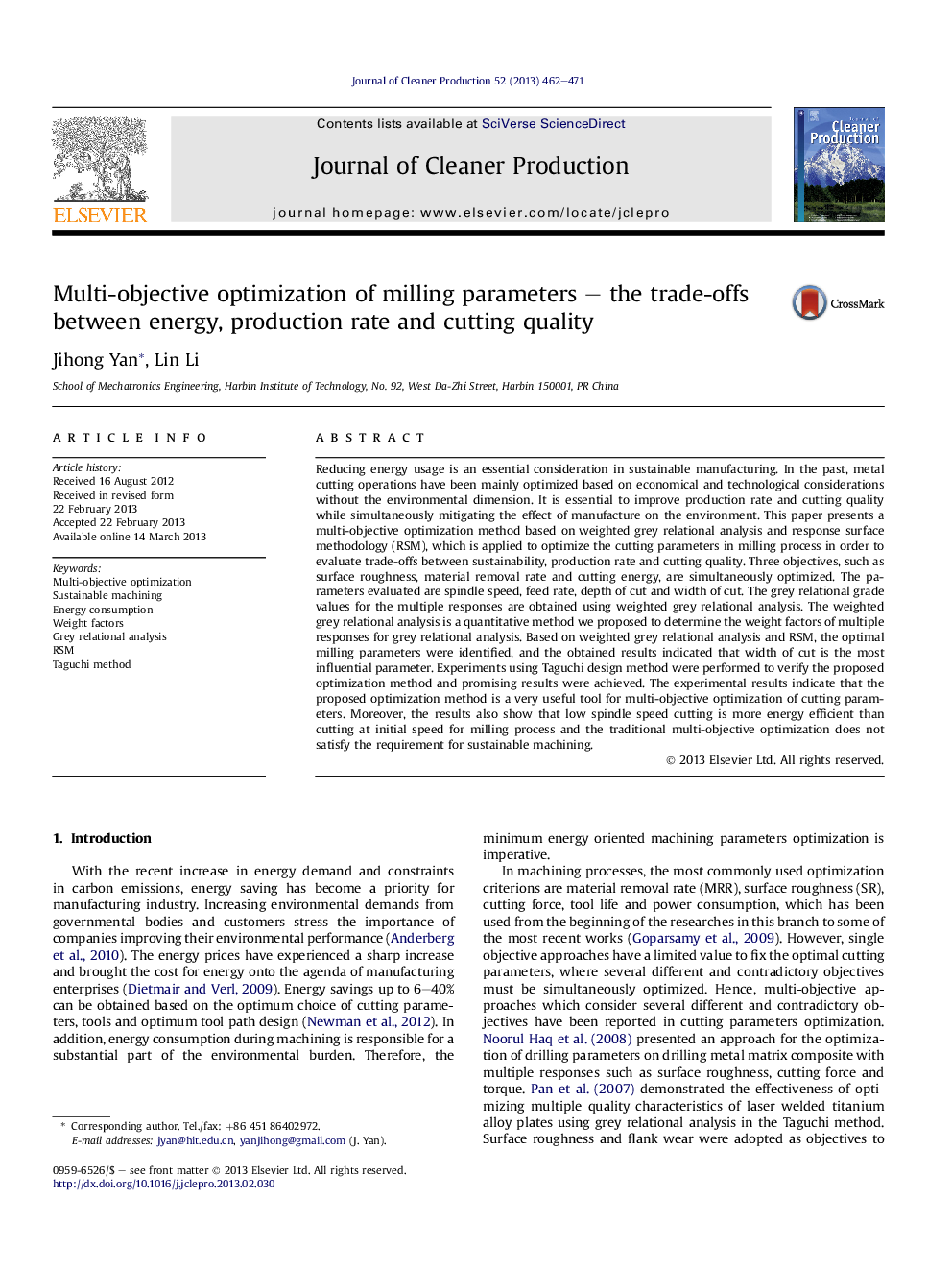| کد مقاله | کد نشریه | سال انتشار | مقاله انگلیسی | نسخه تمام متن |
|---|---|---|---|---|
| 1745265 | 1522194 | 2013 | 10 صفحه PDF | دانلود رایگان |

Reducing energy usage is an essential consideration in sustainable manufacturing. In the past, metal cutting operations have been mainly optimized based on economical and technological considerations without the environmental dimension. It is essential to improve production rate and cutting quality while simultaneously mitigating the effect of manufacture on the environment. This paper presents a multi-objective optimization method based on weighted grey relational analysis and response surface methodology (RSM), which is applied to optimize the cutting parameters in milling process in order to evaluate trade-offs between sustainability, production rate and cutting quality. Three objectives, such as surface roughness, material removal rate and cutting energy, are simultaneously optimized. The parameters evaluated are spindle speed, feed rate, depth of cut and width of cut. The grey relational grade values for the multiple responses are obtained using weighted grey relational analysis. The weighted grey relational analysis is a quantitative method we proposed to determine the weight factors of multiple responses for grey relational analysis. Based on weighted grey relational analysis and RSM, the optimal milling parameters were identified, and the obtained results indicated that width of cut is the most influential parameter. Experiments using Taguchi design method were performed to verify the proposed optimization method and promising results were achieved. The experimental results indicate that the proposed optimization method is a very useful tool for multi-objective optimization of cutting parameters. Moreover, the results also show that low spindle speed cutting is more energy efficient than cutting at initial speed for milling process and the traditional multi-objective optimization does not satisfy the requirement for sustainable machining.
Journal: Journal of Cleaner Production - Volume 52, 1 August 2013, Pages 462–471